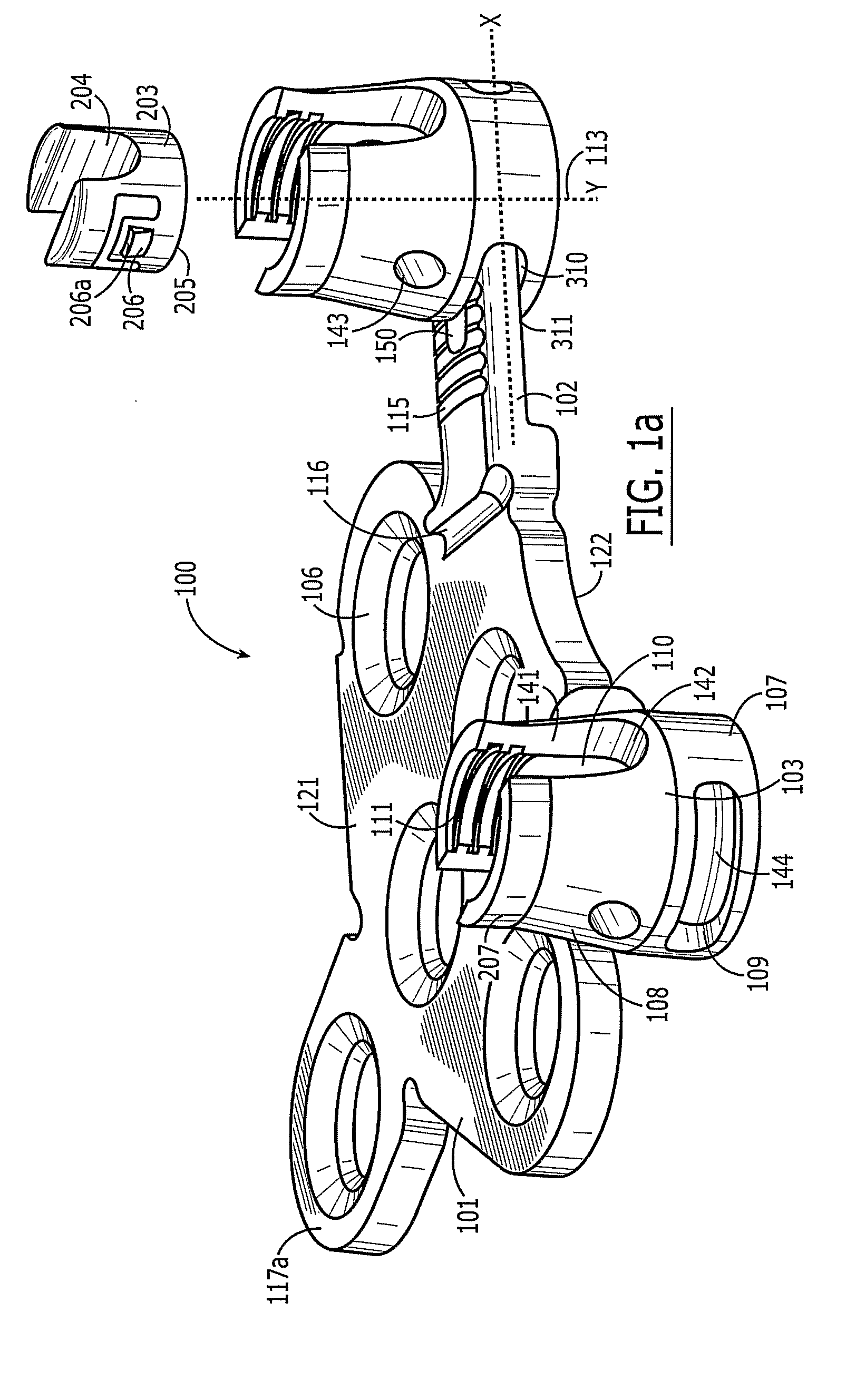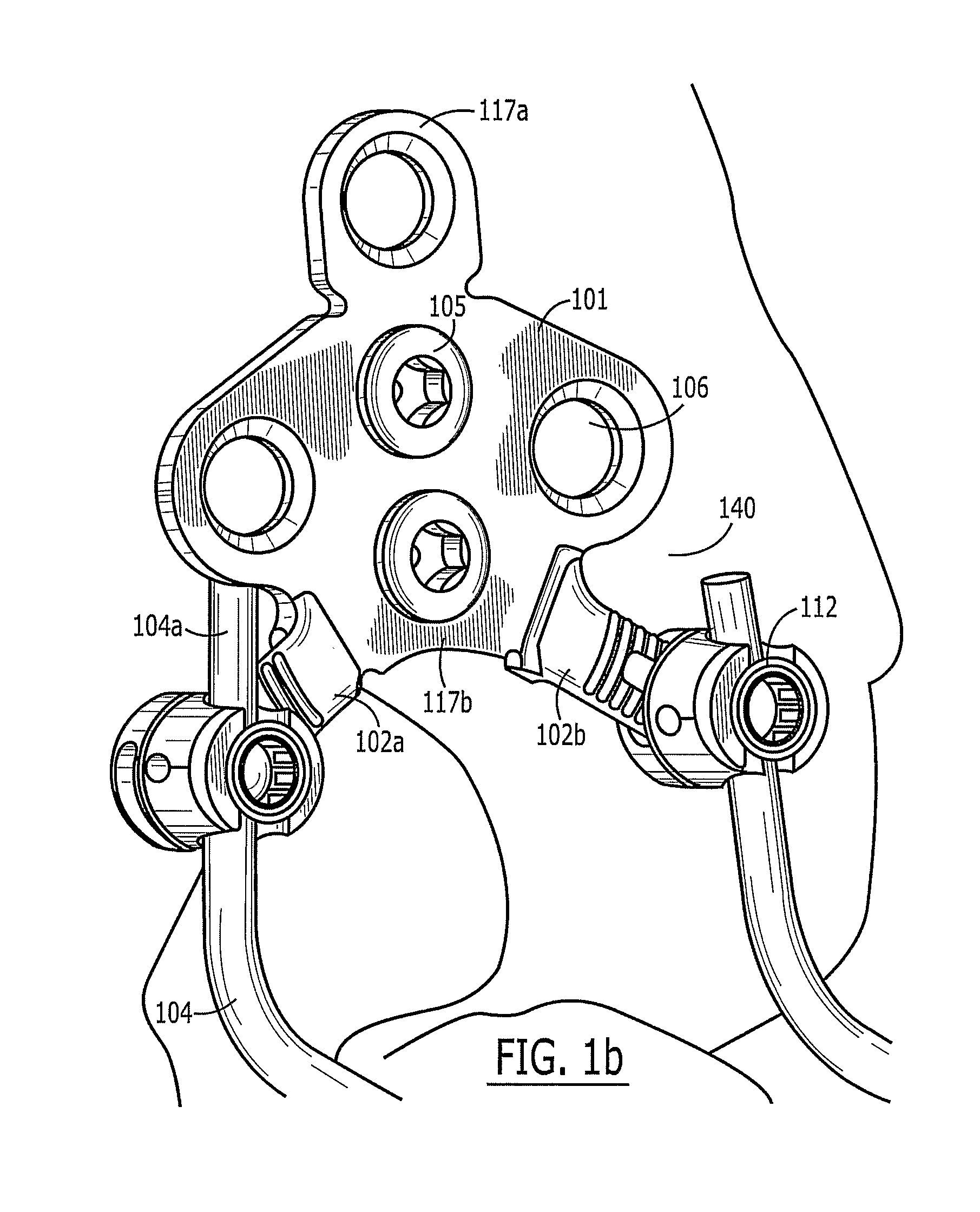Occipitocervical Fixation System
a fixation system and occipital plate technology, applied in the field of occipital plate system, can solve the problems of increasing the complexity of the system, complicating the installation, adding bulk to the system, and presenting additional challenges to the occipital area for implantation, so as to avoid the complexity and bulk of external nuts and support platforms
- Summary
- Abstract
- Description
- Claims
- Application Information
AI Technical Summary
Benefits of technology
Problems solved by technology
Method used
Image
Examples
Embodiment Construction
[0021]Referring to FIGS. 1(a) and 1(b) perspective views of a preferred embodiment of an occipital plate system 100 of the present invention are shown. The occipital plate system 100 is suitable for securing distal ends 104a of spinal rods 104 to the occiput of a patient's skull 140. For purposes of describing the relative position of various elements of the system, the system is deemed to have a top 121 (which, in FIG. 1 projects out of the page), a bottom 122 (which projects into the page), a superior end 117a (toward the top of the page), and an inferior end 117b (toward the bottom of the page). It should be understood that this orientation is for descriptive purposes only and should not be used to limit the scope of the invention.
[0022]The occipital plate system 100 comprises: (a) a plate 101 having one or more apertures 106 for receiving bone fasteners 105 adapted for securing the plate 101 to the patient's skull; (b) two rails 102a, 102b extending outwardly from the plate 101;...
PUM
 Login to View More
Login to View More Abstract
Description
Claims
Application Information
 Login to View More
Login to View More - R&D
- Intellectual Property
- Life Sciences
- Materials
- Tech Scout
- Unparalleled Data Quality
- Higher Quality Content
- 60% Fewer Hallucinations
Browse by: Latest US Patents, China's latest patents, Technical Efficacy Thesaurus, Application Domain, Technology Topic, Popular Technical Reports.
© 2025 PatSnap. All rights reserved.Legal|Privacy policy|Modern Slavery Act Transparency Statement|Sitemap|About US| Contact US: help@patsnap.com



